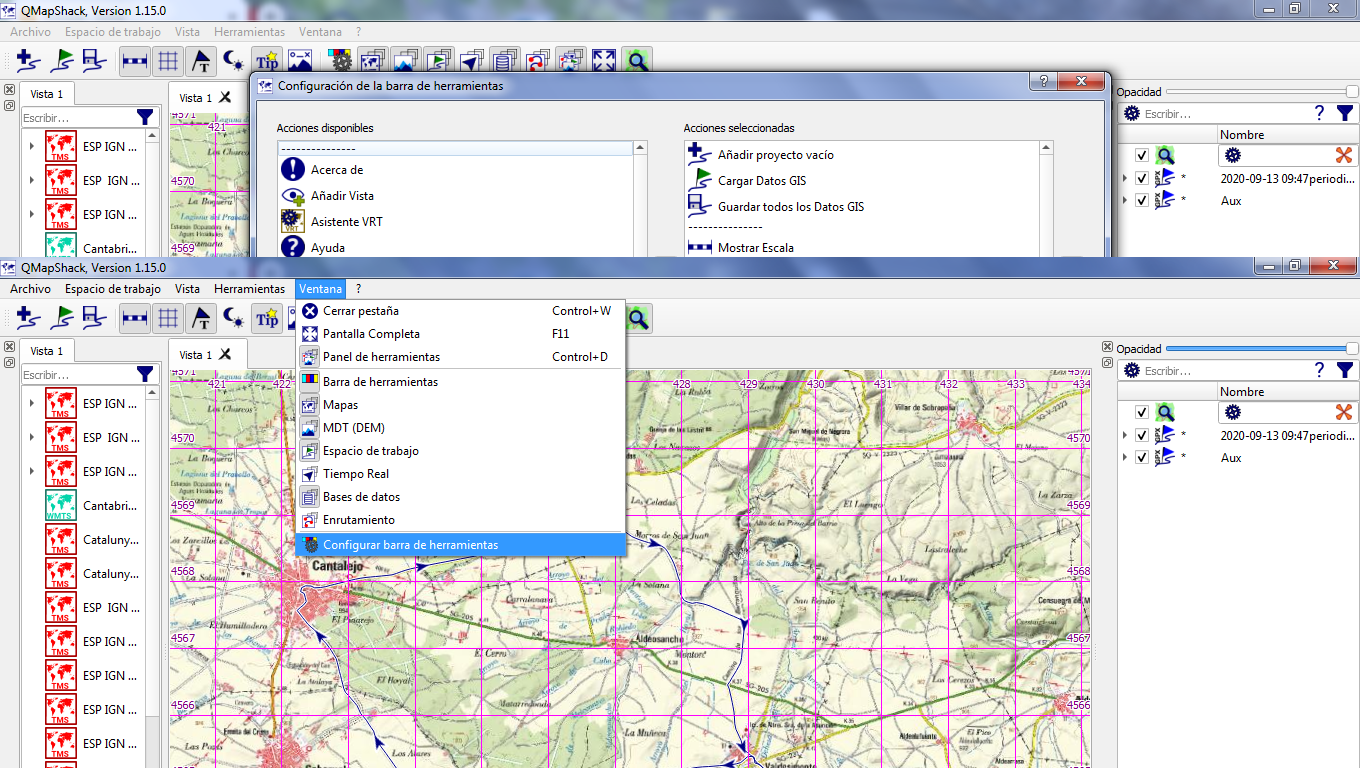
- #Qmapshack changelog how to#
- #Qmapshack changelog serial#
- #Qmapshack changelog update#
- #Qmapshack changelog download#
- #Qmapshack changelog windows#
I found the lsusb and the gpsbabel utility useful in testing the connexion. The to make sure that the Garmin is automounted r/w for all users when plugged in to a USB post I created /etc/udev/rules.d/les, with the content SUBSYSTEM="usb", ATTR="091e", MODE="0666", GROUP="plugdev"
#Qmapshack changelog serial#
That file now looks like: # stop garmin_gps serial from loading for USB garmin devices I don’t know if this is necessary, but everything I want seems to work with it there. I edited /etc/modprobe.d/blacklist to stop Ubuntu loading the garmin_gps module. What needs doing seems similar but how you do it has changed. this from GPS babel) related to old versions of Ubuntu (not surprising, this garmin is from the Ubuntu Feisty era). This summer was the first time I used this combination on my new PC, and I found some of the config difficult because the info I could find (e.g. To plan routes and manage the routes, tracks and maps on Ubuntu I use QLandkarte GT. I use it with OpenCycleMap contour maps downloaded from talkytoaster. I have a rather old Garmin GPS eTrex that I use for GPS on walking holidays and cycle rides.
#Qmapshack changelog update#
I’ve written an update about Cycle route planning for Garmin eTrex Vista on Ubuntu 18.04 Since then both Ubuntu and QLandkarte have changed.

Elev.Note (added July 2018) this article was written in Aug 2015. The elevation data will still be shown thanks to the DEM data for QMapShackĮasy non ? Author Minty95 Posted on 11 June 2021 12 January 2022 Categories Linux Tags DEM data, Dig. It’s done, you can now modify your trace, add, remove, change it.
#Qmapshack changelog windows#
Now your Track Information windows should now show you the data like before you started playing with the trace and lost it. Going back to your trace that you have been working on and lost the elevation date, Right click on the trace, choose Replace Elevation by DEM. Now as you can see, you just have to add the path where the DEM files / folders areĪll being well this will now add to this empty window FranceDEM (this is the FranceDEM.vrt file. In this empty window, right click and use the Setup DEM Paths Adding the DEM folder path Now back to the small window that you should have showing, probably empty when you created the window from the top tool bar : Window – – Dig. In my case FranceDEM.vrt I saved this file next to my franceDM folder but I believe you can put it almost any where. This will open a window so that you can create (or modify an existant xxx.vrt file) In you case of a new one so just give this file a name. So with all your tiles now in the left hand window, all you need to do is click on the Target Filename: (Blue folder before this text)

You’ll have a new window like this Next step TARGET Filename Build the VRT Select all the files from this window and click open. Guide the linux dialog windows to your franceDM folder (or what ever name you gave this folder) My DEM tiles Click on the Select source files: (Green folder before this text) Then from the top tool bar : Tool - VRT Builder.

I assume that you have downloaded all the tiles that you need, again in my case all that covers France Now in the program QMapShackįirstly add a window from the top tool bar : Window – – Dig. You will have as shown in the image above a file N48E001 When all tiles downloaded you will have many files in the folder So you’ve downloaded the tiles I called it franceDM (you will need to dezip them later or extract them while downloading) my folder and VRT file in my DEM folder
#Qmapshack changelog download#
Now I download these tiles to a folder that I had created in my DEM folder. Only one tile to be downloaded at a time. In my case France, so loads of tiles and you have to download them one at a time, doh. I then open from where you can download the DEM tiles for the area that you need. I have or created (I can’t remember which) a DEM folder Mine is in /home/trevor/qmapshack DEM folder in the QMapShack folder
#Qmapshack changelog how to#
So how to use DEM filesįirstly in your QMapShack folder. So here is how to add DEM data to QMapShack, so that when you modify an existing GPX trace you don’t lose the elevation details. I finally realised that this was due to QMapShack not having the elevation info, and also realised that I would need to get this from somewhere, using DEM files.


 0 kommentar(er)
0 kommentar(er)
